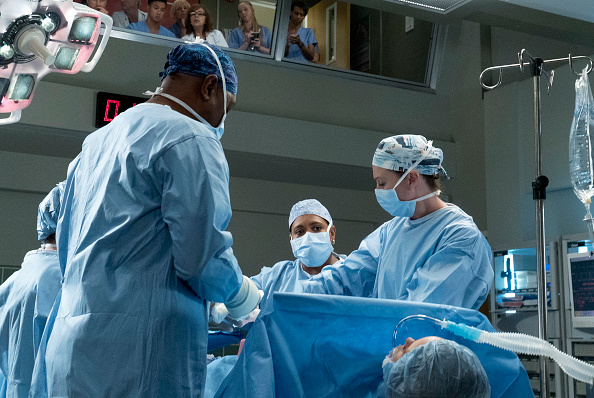
Getty Images
How Legit Are the Medical Cases on ‘Grey’s Anatomy’? Doctors Reveal How Accurate the Show Is! (EXCLUSIVE)
Everybody has that one friend that thinks they’re a doctor because they’ve seen every episode of Grey’s Anatomy. But how legit are the medical problems on the show? Are the cases actually real? We did some digging to find the answers. It turns out, Grey’s Anatomy does base many of their episodes on real cases and works with medical experts to make sure they are realistic. During a recent episode, Dr. Nathan Riggs (played by Martin Henderson) performed the AngioVac system procedure to treat a patient suffering from venous thromboembolism or VTE. And, according to Dr. Lowell Kabnick, showrunners realistically portrayed the operation to treat a blood clot that traveled through the venous system.
“[They] did a great job using the AngioVac system. This is very representative of what a patient might experience if they went in for this procedure with a doctor,” Dr. Kabnick exclusively told Closer Weekly in a new interview. “I think the show is committed to realistically portraying medical procedures. In this instance, they were able to highlight just how serious a VTE can be, which is important information for people to know.”
Chief of Neurosurgery Steven Giannotta, M.D. at USC’s Keck School of Medicine has been working with Grey’s Anatomy since it began in 2005, and he has seen many of his stories play out onscreen. In fact, he recently recalled one episode where the writers were struggling with the medical content and calling him constantly for answers. “They had a very sympathetic character with a bad tumor in a bad place and wanted Dr. Derek Shepherd to operate. My wife was watching the show the night it aired, and as I headed for bed, I said, ‘That’s my patient.’ The next morning she confronted me with, ‘Hey, McDreamy, your patient died on TV last night.’ Luckily in real life, my patient who inspired this story lived,” he told The Hollywood Reporter.
Over the years, Steven has spoken often with showrunner Shonda Rhimes, who was “eager to probe the realities of life as a neurosurgeon and the pressures of the hospital operating room. They were meticulous in wanting every word, every surgical tool, every nuance of the OR to be accurate.” To make sure things seem realistic on set, Grey’s also uses real nurses as extras. Some of them have been around for years! In 2013, Sandra Oh tweeted about one of them, writing, “The nurse in that scene, Bokhee, is a real surgical nurse. She’s been with us since the beginning. She’s like my [second] mom, she’s the best.”
Even some of Grey’s Anatomy‘s wildest storylines seem to be based in truth. The 70-pound tumor, the man with parasites in his brain, the dude who shot a nail gun into his head and survived — these are all based on real stories, Darria Gillespie, M.D. from the Emory University School of Medicine told Women’s Health. Steven isn’t surprised. “A lot of people have asked me if the show overdramatizes the procedures,” he explained. “The answer is, TV could never overdramatize some of the cases I have encountered.”
Of course, we’re sure that real doctors aren’t constantly hooking up in the break room, but overall Grey’s goes to great lengths to make the show as believable and medically accurate as possible. Even if a case isn’t based on a real-life story, it’s at least feasible and depicted with real medical terms. Perhaps that’s why the show has lasted so long!








































